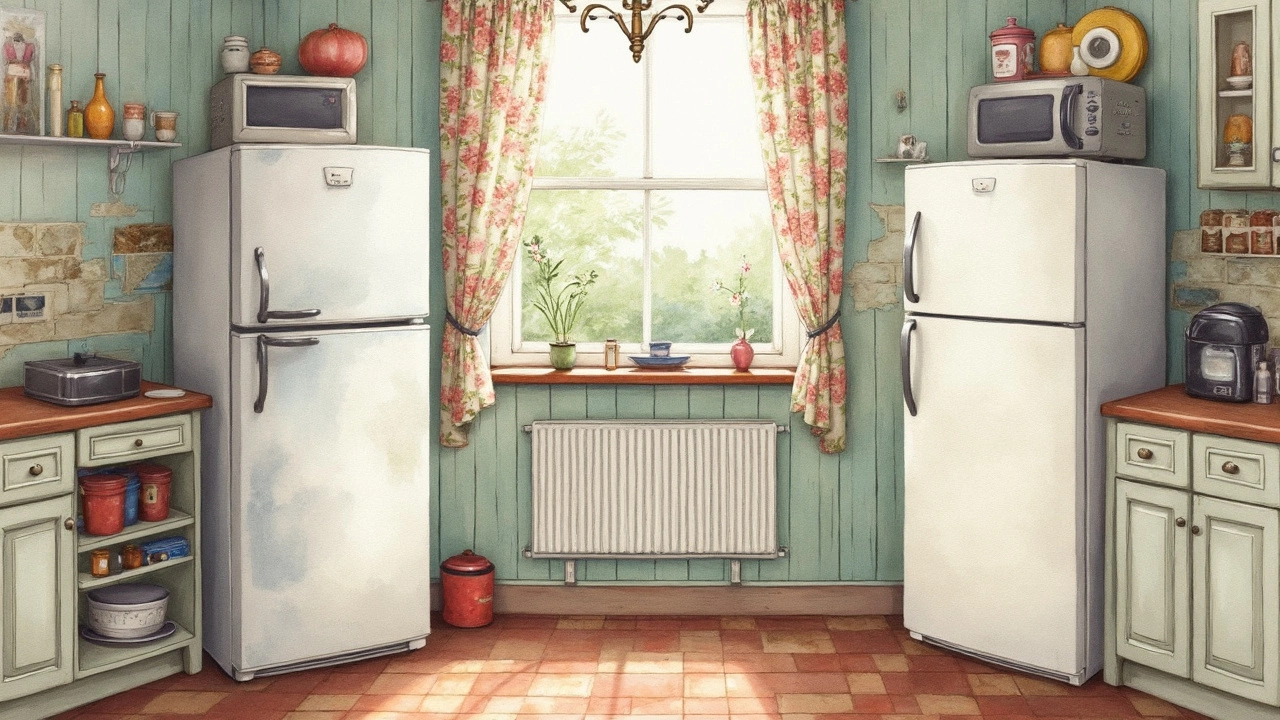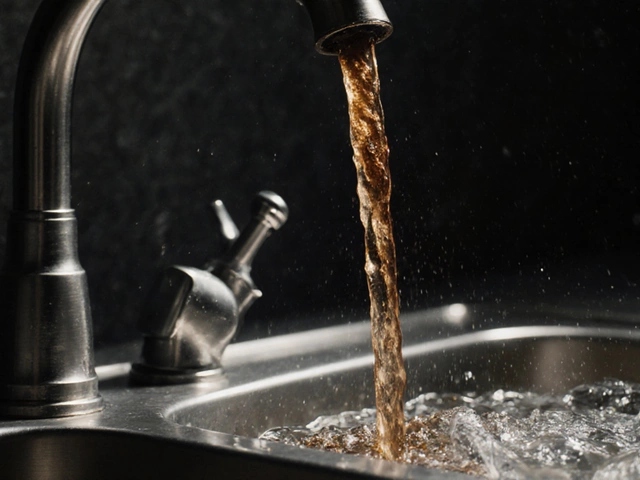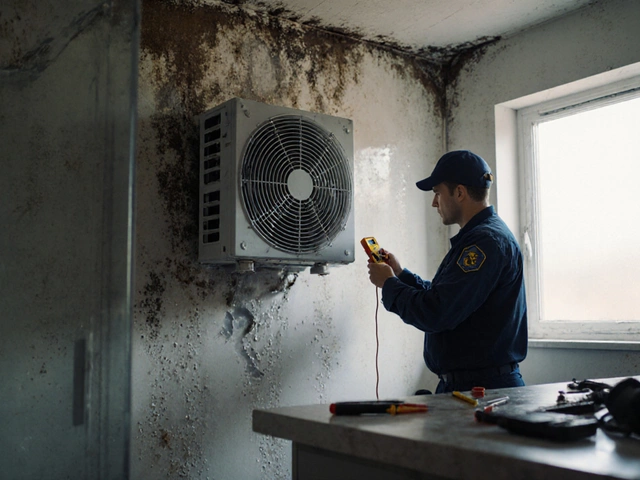So, your freezer's acting up, and you're left wondering if it's worth pouring money into repairs. Before you reach for the toolbox or the phone to call a repair guy, consider a few things. Is your freezer making strange noises, failing to maintain cold temperatures, or showing signs of a potential leak? Identifying the problem is the first step to figuring out if a repair is the way to go.
You'll want to weigh the repair costs against what you'd spend on a new freezer. If it's an older model and the repair costs are creeping up to half the price of a new one, it might be time to say goodbye. But for newer units, repairs can actually save you some serious cash, especially if the issue is something minor like a broken seal or a thermostat that just needs a little love.
Not feeling up to a full-on repair? Some problems are surprisingly easy to tackle on your own. Think clogged defrost drains or doors not sealing properly due to worn-out gaskets. A bit of DIY might be all you need to extend your freezer's life without calling in the pros.
- Signs Your Freezer Needs Repair
- Understanding Repair Costs
- Comparing Repair vs. Replacement
- DIY Fixes You Can Try
- When to Call a Professional
Signs Your Freezer Needs Repair
So your freezer is acting a bit funky, and you're not sure if it's a cry for help. Here are some telltale signs that your freezer might need a repair. Keep an eye (and ear) out for these symptoms.
Loud Noises: A quiet hum is normal, but rattling, buzzing, or clunking? Not so much. If you feel like your freezer has transformed into a rock band, it could be an issue with the evaporator fan motor or compressor.
Temperature Fluctuations: Consistent coldness is key. If you’re noticing thawed food or ice build-up, your freezer might be losing its grip. This could be due to a faulty thermostat or issues with the door seal not sealing properly.
Leaks or Frost Build-Up: Pooling water or excessive frost are neon signs saying something’s off. A blocked defrost drain might be the culprit for leaks, while frost could mean the defrost system needs attention.
Door Seal Trouble: If your freezer door isn’t closing snugly, it’s more than just an annoyance. A loose seal can lead to warm air sneaking in and cold air escaping, pushing your freezer to work overtime.
Food Spoiling Fast: If your groceries aren’t lasting as long as they should, even in a recently purchased freezer, there might be something up with the cooling mechanisms.
Understanding these signs can help you decide whether to fix it up or shop for a new one. If you're unsure, a quick check by a professional could save you from a potential freezer fail down the line.
Understanding Repair Costs
Dealing with a broken freezer might lead you to the ultimate question: how much is this going to set me back? Honestly, repair costs can vary a lot, so let’s break it down a bit.
First off, think about the type and age of your freezer. Repairing a high-end model might cost more than fixing a basic one, just like how a vintage sports car costs more to fix than your everyday sedan. Newer freezers could still have service contracts or warranties, meaning some repairs might not cost you anything out of pocket.
On average, simple repairs like replacing a gasket or a thermostat might run you anywhere from $50 to $200. Say the problem is with the compressor; now we’re talking a heftier bill, potentially $200 to $400. That's assuming the parts are available and you’re going through a professional service. And if your freezer is built into the kitchen, you could tack on extra labor costs because getting to it isn't as straightforward.
Not all repairs justify their cost, especially for older appliances. If the repair costs are climbing beyond $500—and particularly if the appliance is over 8 years old—it could be time to consider shopping for a new one.
- DIY Repairs: For the handy folks, some fixes are doable at home. Replacing a door seal or unclogging a defrost drain can be an afternoon project with the help of a YouTube tutorial.
- Professional Service: When it’s beyond your skill level, hiring a pro is the way to go. It’s more expensive but often essential for complex issues.
Having an idea of what might be wrong helps you budget and decide whether to repair or replace. Keeping these factors in mind can save you time, money, and a bit of sanity when dealing with appliance repair.

Comparing Repair vs. Replacement
Alright, when your trusty freezer decides to go on strike, the big question is whether to repair or replace it. Why does this matter? Well, it's about balancing your wallet and your needs. Let's break it down a bit.
First, think about the age of your freezer. Is it over a decade old? The average lifespan of a freezer is about 10-15 years. If it's getting up there in age and starts breaking down, repairs might just be a temporary band-aid. In these cases, replacement could be the smarter move, especially if energy efficiency has improved since your model was released.
But what if your freezer is fairly new or just a few years old? Often, if the repair costs are less than 50% of the price of a shiny new freezer, it makes sense to repair. For instance, a thermostat issue or door seal replacement might run you $100-$300, while a new freezer could set you back $500 or more.
- If parts are scarce or cost a fortune, replacement might be the better choice.
- If repairs are small and quick, go for it and save some bucks.
- Look out for warranty. If your appliance is still under warranty, repairs could be covered, making them the no-brainer option.
Let's talk energy efficiency for a sec. Newer freezers are designed to use less electricity, which is great not just for your monthly bill but for the planet too. If your old unit is chugging away like an energy-guzzler, investing in a new unit can pay off over time with those energy savings. Check this out:
| Model Age | Energy Use (kWh/year) |
|---|---|
| 10+ years | 700+ |
| 5-10 years | 500-700 |
| New models | 400-500 |
If you're the DIY type, tackling small repairs can also save you a chunk of change, and there are plenty of tutorials out there to guide you. But when in doubt, don't hesitate to call in for professional help. Sometimes, a visit from a repair tech is all you need to get your freezer back in tip-top shape without blowing your entire budget.
DIY Fixes You Can Try
Troubleshooting a wonky freezer yourself might sound scary, but trust me, there are some fixes you can tackle without calling a pro. Let's dive into a few that are common and honestly, quite manageable.
First off, if your freezer isn't staying as cool as it should be, check the door seals. Over time, seals can wear out and let the cold escape. To test this, close the door on a piece of paper. If you can pull it out easily, it’s time to replace those seals. You can purchase new ones from an appliance store and swap them out in a few simple steps. Here's how:
- Turn off and unplug the freezer.
- Remove the old gasket by loosening the screws or clips.
- Align the new gasket and secure it with screws or clips.
- Plug the freezer back in and check for a snug seal.
Another issue could be a freezer repair staple—the clogged defrost drain. When this gets blocked, your freezer might start forming ice puddles. To fix it, find the drain (usually at the bottom) and use warm water to melt away the ice clog. A turkey baster is handy for flushing the line!
If the freezer is noisy, the culprit might be the condenser fan or coils. A little cleaning can work wonders here. Look for dirt and dust on the coils, often located at the back or beneath the freezer, and give them a good brushing. More often than not, this improves efficiency and cuts down that noise.
Before you knock it off as a lost cause, these DIY fixes might just bring your freezer back to life. Just remember, if the problems persist or seem too complex, it might be time for some professional help or considering other appliance repair options.

When to Call a Professional
Sometimes, no amount of DIY effort is going to cut it, and that's when it's time to bring in the pros. If your freezer repair attempts haven't worked, it might be because you're up against issues that need special tools or expertise. One clear sign is when your freezer keeps tripping your circuit breaker. This could point to serious electrical problems, which are best handled by a professional for safety reasons.
Another situation to call for help is if your freezer is in energy overdrive. Check your electricity bill—if it's suddenly sky-high, your freezer might be guzzling more power due to a fault in its compressor or motor. These parts are not only tricky to access but can also be dangerous if you're not sure what you're doing.
If the freezer's still running but the ice cream has turned to slush, the culprit could be a faulty thermostat or temperature control. These components are often sealed in or require precise calibration—a job some might prefer leaving to someone who does it for a living.
- Leaking Water: Persistent puddles or ice build-up could indicate a blocked defrost drain or even door seal issues. While some of these can be a DIY fix, if the problem keeps coming back, it's best to get a professional to investigate further.
- Weird Noises: Freezers can make all sorts of sounds, but when you're hearing constant rattling or buzzing, it's time for an expert assessment. This could mean something's up with the internal fans or compressor.
And here's a tip: before you make that service call, have the freezer’s model and serial number handy. This info will help the technician know in advance what parts they might need to bring along.





